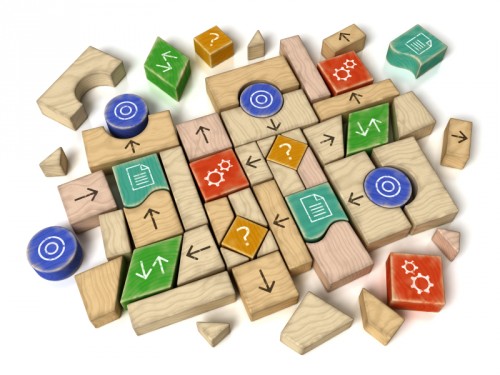Make your new habits tangible and portable
Datum: 2013-02-12 14:03

When you are in the process of improving you structure at work, it is highly probable that you will need to change a habit or two as well, that is, how you deal with certain situations in your everyday life.
It might be the way in which you as soon as you arrive at the office in a concrete way get an overview of all the things you need to do during the day.
It might be the way in which you make a conscious prioritization when you are suddenly overloaded with new tasks.
It might be how you process your e‑mails in such a way that you stay in control of the situation, yet avoid that the inbox fill up.
It can be how you act when someone delegates a task to you and you want to complete it in good time and in a satisfactory way.
It can be what you do with a brilliant idea on how to improve something a colleague told you.
Or, perhaps you have refined the process of how to quickly and smoothly dispatch an order from a new client to perfection.
Answer your own questions effortlessly
So that you can easily remember how you have decided you will act to completely establish this new habit, you need to be able to easily remind yourself of what to do when you get into the situation you wish to change. You should be able to ask yourself “OK, here I am again. What was it I said I would do when I got here?” and get an answer immediately.
Hence, you need to make the new habits visible and portable.
Do this
- Choose a couple of new habits, work methods, routines or processes that you want to make completely natural to yourself.
It can for instance be “This is what I do when I receive process and store away e‑mails.” - Describe them as process-maps (with boxes, arrows and rhombs) or checklists, according to your own preferences. With a checklist I mean an instruction that follows the format 1), 2), 3) et c.
- Decide to either carry these descriptions with you digitally or physically.
In this digital day and age where most things are kept in the cloud, you might be tempted to store your descriptions digitally, but remember that it is crucial that you can get them out quickly and easily when you need them without having to click, drag, click, wait, zoom et c, and without having to have a good mobile coverage in the room you happen to be in.
There is also a risk that you forget the instruction even exist if you store it away too deep into the folders on your digital device. - But, if you choose the digital, easily updated way to keep these lists, save process-maps as pictures and checklists as documents, and synchronize them with your phone or add them as a service in Evernote, Dropbox or some other online storing-service with total portability.
- If you feel like having your lists in a physical format, print the maps and list in pocket-sized format and either wrap them in plastic or laminate them, for instance by using the smart plastic pockets from Janoplast (whom I do not have any cooperation with, just to be extra clear).
Or spray-glue them into a soft, thin notebook, for instance Moleskine’s smallest version. - Keep the notebook or the plastic-wrapped cards in a place where you can reach them easily. Take a moment to really think about this and find a really good place to keep them in, because if you are like me, having to do two things instead of one, like opening a zipper and then opening a lid, is one step too many if I am to really use my lists.
- Whenever you are in doubt as to what you have decided you want to do so that the results in a particular situation are improved, just take out your description and remind yourself. Do not waste time trying to remember and avoid starting from scratch over and over again since you missed to do a step in the beginning of the process.
Support only an arm’s length away
If you describe your refined ways of working in process-maps or checklists, as well as make sure to keep them close at hand in your everyday life, you will be able to establish the new habits quicker and with greater ease. You will have them as a supporting tool as long as you feel you need them. They will make it more probable that you get it right from the beginning and that you do not have to spend time, energy and money fixing what went wrong. And when the day comes for you to train someone else in doing something, the routines are already in an accessible format and you will communicate your way of working with minimal effort.
What is your trick?
How do you make your routines and working methods visible in such a way that it is easy to communicate them to others? Write a comment to let me know.




